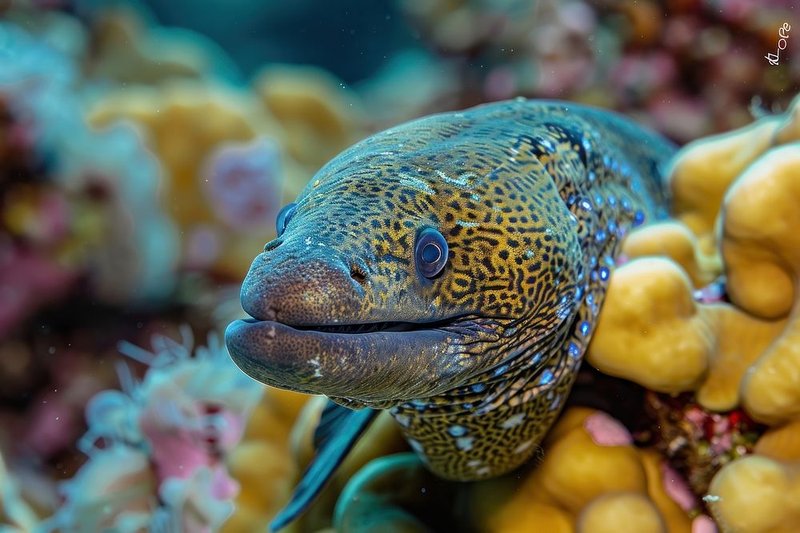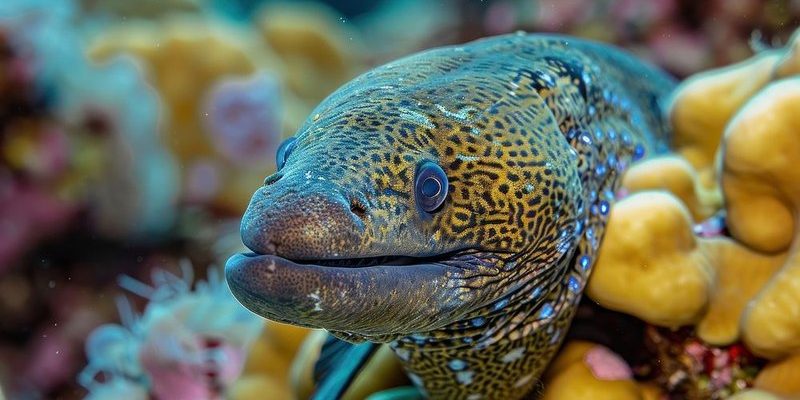
Moray eels might look a little intimidating with their elongated bodies and toothy grins, but they’re a vital part of their environment. They glide among reefs, hiding in cracks and crevices, ready to spring into action at a moment’s notice. By understanding their role in marine ecosystems, we can appreciate the intricate relationships that support life in our oceans. So, let’s dive deeper into the world of moray eels and discover why they matter.
What Are Moray Eels?
Let’s start with the basics. Moray eels are a family of fish known as Muraenidae. They have over 200 different species found in warm waters around the world. Unlike typical eels, which have a more streamlined shape, moray eels have a thick, muscular body that allows them to navigate the nooks and crannies of reefs. Most are nocturnal, meaning they come out to hunt when the sun goes down, often using their keen sense of smell to locate prey.
Moray eels can grow quite large, with some species reaching lengths of over 10 feet! Their skins are often patterned with striking colors and designs, making them truly unique. You might spot them peeking out of their homes, their heads bobbing like curious pets, just waiting to see what’s happening around them. These eels have an innate ability to blend in, providing them with natural camouflage against predators.
Predators and Prey: The Circle of Life
In the underwater food web, moray eels are both predators and prey. They primarily feed on smaller fish, crustaceans, and even octopuses. By controlling the populations of these species, moray eels help maintain balance within their ecosystems. Think of them as the neighborhood watch of the reef, ensuring that no single species takes over.
When they hunt, moray eels use a unique method. They have two sets of jaws—an outer jaw for grabbing their prey and a second, inner jaw that helps pull it further down their throat. It’s a bit like having two sets of hands when you’re trying to eat a messy sandwich! This dual technique makes them highly effective hunters, ensuring their survival while keeping marine populations in check.
But let’s not forget that moray eels can also become dinner themselves. Larger fish and some species of sharks see these eels as a tasty snack. This relationship highlights how interconnected marine life is; every creature has a role to play. A healthy population of moray eels means a thriving reef with diverse species, benefiting the entire ecosystem.
Habitat and Home
Moray eels are particularly fond of rocky reefs, coral formations, and sometimes even shipwrecks. These environments provide ideal hiding spots, allowing moray eels to ambush their prey without being seen. Imagine a cozy, secret hideout—you’d want to keep it safe and sound, right? That’s how moray eels feel about their homes.
Coral reefs, which are already facing threats from climate change, pollution, and overfishing, rely on fish like moray eels. These eels help create a balanced environment where other species can thrive. Think of them as the custodians of the reef, keeping it clean and functioning. When moray eels thrive in their habitats, it’s a sign that the entire ecosystem is doing well.
Unfortunately, their habitats are at risk. As we continue to change the oceans through human activities, moray eels and their homes face increasing threats. Preserving their environment is crucial for the well-being of not just moray eels but a multitude of oceanic species.
Moray Eels and Marine Biodiversity
Biodiversity refers to the variety of life in a particular habitat. Moray eels contribute significantly to marine biodiversity, playing their part in maintaining healthy ecosystems. By preying on certain species and providing food for others, they help maintain a dynamic balance.
For instance, when moray eels hunt smaller fish, they prevent those populations from exploding. This ensures that the reef has enough resources to support different species, from corals to larger fish. A diverse reef is not only more resilient to environmental changes but also more vibrant and full of life.
Moreover, moray eels interact with other species in fascinating ways. Some small fish, like cleaner wrasses, often swim into moray eels’ open jaws to eat parasites. It’s a win-win situation: the eels get a dental check-up, while the cleaner fish get a meal. This symbiotic relationship showcases how interconnected life can be in the ocean.
Human Impact and Conservation Efforts
The health of marine ecosystems, including moray eels, has been severely impacted by human activities. Overfishing, pollution, and habitat destruction have taken a toll, making it crucial for us to step up for these playful creatures. You might wonder, “What can I do to help?” Luckily, there are plenty of ways to contribute!
Supporting sustainable fishing practices helps ensure that moray eels aren’t overfished. Participating in or supporting marine conservation efforts, such as coral restoration projects, is another fantastic way to make a difference. Even small actions, like reducing plastic use and participating in beach cleanups, can help keep the oceans cleaner for everyone.
You could also advocate for policies that protect marine habitats. The more noise we make together, the more likely policymakers will listen. Strengthening marine protected areas can give these essential ecosystems a fighting chance against the threats they face.
To wrap things up, moray eels might not be the most glamorous creatures swimming around the ocean, but they play an indispensable role in maintaining marine ecosystems. They’re not just predators; they’re essential players in the intricate web of life that thrives beneath the waves. By keeping populations in check and interacting with other species, they help maintain the balance necessary for healthy marine biodiversity.
As we continue to navigate the challenges facing our oceans, understanding and protecting creatures like moray eels becomes increasingly vital. They are part of our planet, contributing to a vibrant underwater world that needs our attention and care. So, the next time you think about the ocean, remember those intriguing moray eels, and let their story inspire you to appreciate and protect our amazing marine ecosystems.

